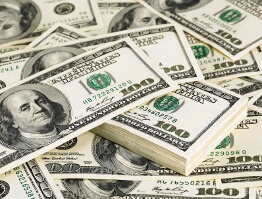
The US dollar plunged against the euro, the British pound, and other major currencies on Wednesday, following a stream of lackluster data that signaled a weaker economy than analysts expected. Disappointing inflation and retail sales numbers today reduced optimism between traders ahead of manufacturing and housing data later this week.
Todayâs data came hours before the Federal Open Market Committee releases its latest monetary policy decision. The committee closely follows a number of economic indicators, including inflation and consumer spending, to decide US interest rates, which support the US dollar when raised. Despite the disappointing data today, the committee is widely expected to raise interest rates 0.25% to a range between 1.00% and 1.25%, but may offer a dovish outlook for further interest rate hikes this year.
Inflation moved further away from the Federal Reserveâs target in May, according to a report on consumer prices that was released by the US Bureau of Labor Statistics at 12:30 GMT today. The report said that the consumer price index declined 0.1% in May following a 0.2% gain in April, despite expectations of a 0.1% increase. The index rose 1.9% on a yearly basis, down from 2.2% in April as energy prices declined to outweigh gains in food prices.
The core consumer price index, which excludes prices of food and energy to better reflect inflation, grew 0.1% last month to disappoint estimates of a 0.2% growth. Over the 12 months until May, the index increased 1.7% from 1.9% in April, as subindexes for communication, new vehicles, apparel, and alcoholic beverages declined. Analysts expected the core consumer price index to remain unchanged at 1.9% last month.
Additional data came from the US Census Bureau today, which published two separate reports on retail sales and business inventories. The retail sales report said that May saw $473.8 billion of retail sales, 0.3% lower than Aprilâs level and below expectations of a 0.1% gain from the previous month.
The biggest declines were in sales of electronics and appliances, gasoline, and sports equipment, which overshadowed higher clothes and furniture sales. The data signaled weaker consumer spending last month, which may weaken the Federal Reserveâs case for more interest rate hikes this year.
Meanwhile, business inventories declined 0.2% to $1.854 trillion in April to match forecasts, following a 0.2% gain in March. Declines in business inventories indicate a smaller number of unsold goods, which means higher consumer demand.
EUR/USD traded at 1.1270 at 17:45 GMT on Wednesday from 1.292 at 14:10 GMT, a level last seen on June 6. EUR/USD began trading today at 1.1210. GBP/USD was at 1.2796 from 1.2813 at 16:00 GMT, the pairâs highest level since June 9. GBP/USD started the day at 1.2748.
The Dollar Index, which tracks the performance of the US currency against other major peers, was at 96.51 as of 17:37 GMT today from 96.97 yesterday.
If you have any questions, comments or opinions regarding the US Dollar,
feel free to post them using the commentary form below.